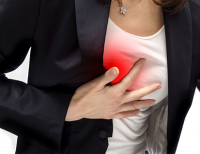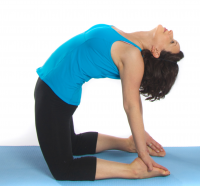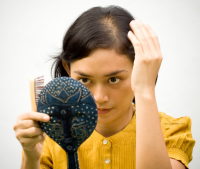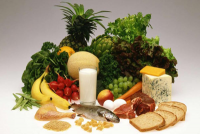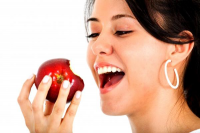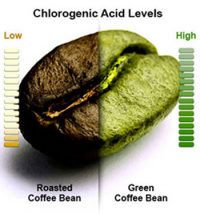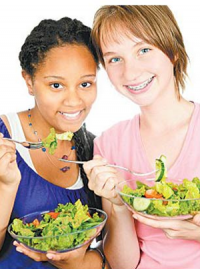Studies prove Honey cure for Canker Sores Honey for mouth ulcers:Now for those who don’t use the word Canker sores which in normal parlance means ulcers or sores in your mouth. These mouth sores make it difficult for you to eat and talk and are caused either due to lack of Vitamin B and if the body produces too much heat, or triggered because of acidic content in certain citrus fruits. If the sores are severe it would be best to seek a doctor’s intervention and if it continues for more than three weeks you must visit the physician for treatment. One of the easiest and sweetest ways to cure these sores is by applying honey on the afflicted part. According to new research in the journal Quintessence International, honey can be just as safe and effective for treating canker sores as a topical corticosteroid. In this study, researchers randomly divided 94 subjects with 180 canker sores into three groups. One group was given honey to use as a treatment for the sores, and the other two groups were given a topical corticosteroid or Orabase treatment (a paste that acts as a protective barrier). All participants were asked to wipe the lesion with a sterile wet cotton pellet, and apply their given treatment to the spot after meals for eight days, stopping use if and when the canker sore was fully healed. They were also told to record pain level and any reactions in a journal, while the researchers evaluated the size and inflammation in the office over the course of the study. So the next time you have a mouth canker/sore apply honey to your heart’s content and you don’t need to worry if this goes inside your stomach either…
Pranayama to Reduce Menstrual Stress Watch Rajeswari Vaddiparthi - Yoga Therapist show us Pranayama techniques which will help reduce the cramps and pains associated with Menstrual Cycle or periods. .
Switch over to Natural Deodorants DIY Natural Deo:Using chemical laced deodorant sticks have known to cause many problems including cancer. Some of the deo sticks contain aluminum when applied to armpits can affect your immune system as the lymph nodes are present there. And if you have the habit of shaving your armpits and you apply the deo there can be equally harmful. You could find deos which are made with natural ingredients in the market but these can be quite expensive. So the easy and cheaper alternate would be to make one at home and we have exactly the right easy DIY recipe where the ingredients are found in your own home... DIY Deodorant Recipe – Ingredients -> 6 Tbs of coconut oil ->1/4 cup of baking soda ->1/4 cup of cornstarch ->Few drops of Essential oils (optional) like lavender or rose for the pleasant scent . Process 1. Mix baking soda and cornstarch together in a glass bowl. 2. Pour in the coconut oil into this dry mixture and using a whisk mix it well. 3. To this paste add a few drops of your favourite essential oil. 4. Store in small glass jar and apply teaspoon of this mixture after your bath. TIP : Wait for the mixture to dry before you put on your clothes if you are worried about staining . Switching over to a chemical-free deodorant will be a natural and healthier choice. Do try this and let us know…
Why should I get the B12 Test done? B12 Test in Women:You start feeling dizzy, unexplained fatigue, forgetfulness and you end up at the doctor’s clinic. The doctor examines you and prescribes a series of test including the B 12 test which is quite expensive. The first doubt would be as to what is the link between your symptoms and B 12? The common most problem among women apart from anemia, thyroid and calcium deficits is the low levels of B 12 vitamins. After the onset of marriage, motherhood and raising children, women tend to neglect their overall body health. Usually after breast feeding which depletes your calcium and vitamin levels this B12 deficiency puts the mother and child at risk for Neuro problems. This test is prescribed when you start feeling these symptoms of fatigue, tingling in the hands and feet, problems with balance, confusion, weakness, loss of appetite and lethargy. Also, if your doctor suspects you might have anemia, you might be tested for B12 deficiency.Another reason is people who are vegetarians may not get their required dose of Vitamin B 12 which can be found more in meat and dairy products like, eggs, fish, poultry and meat. So additional supplements would be needed through medication, if the B12 levels are low. B12 is an important vitamin for many basic bodily functions, like the brain health, blood cell production, and proper nerve functioning. Low B12 levels can lead to serious nerve damage and deteriorating brain functions if not verified and treated properly. The test is fairly simple— a presription for the test and some blood drawn from your hand which only takes a few minutes, but can provide extremely valuable information about the presence or absence of this importnat vitamin in your body. As we grow older we need to get this test done as and when prescribed by your physician so that you maintain optimum levels of B12 for better health and energy.
Early age dieting affects health in older age Dieting at a young age:With young girls as young as 15 or even younger who have become conscious of their looks and weight due to peer pressure are not realizing the long term damage they may be causing to their health later on. The earlier in life a woman starts dieting, the worse long-term consequences it can have for her health, a new study suggests. In the study, presented Tuesday at the meeting of the Society for the Study of Ingestive Behavior in Seattle, researchers asked 1,340 college-aged women when they first started dieting, and then followed them for 10 years to examine their dieting habits and health later in life. They found that an early age of first dieting was related to extreme weight-control behaviors, greater alcohol consumption and misuse, and a greater chance of being overweight or obese at the 10-year follow-up. Since the new study found a link between early dieting and later, risky health behaviors such as abusing alcohol or going on fad diets, it is important that parents, mentors, and health care providers screen young women for these types of behaviors such as fad dieting as it can impact their health negatively for years to come. The new research is a reminder that, while losing weight is generally good for health, an unbalanced approach may lead to health issues such as eating disorders in the long run and the only solution to this is to make permanent lifestyle changes, ideally with the help of a professional.
Prolonged use of respiratory drugs can be ineffective Lung diseases and drugs:A new study by the Scientists from The University of Manchester has revealed that drugs which are widely used to treat respiratory diseases, like asthma and pneumonia, work with the body clock, and render them ineffective. Scientists from The University of Manchester have found out that cells lining the lung airways have their own body clock which is the time-keeper for lung inflammation – both conditions cause swelling (inflammation) in the lungs and more severe lung inflammation happens as a result of the loss of the body clock working in these cells. The team also uncovered how glucocorticoid hormones from the adrenal gland are vital in controlling the level of inflammation in the cells lining the airway and concluded that the rhythm of the clock in the lining of the cells in the lungs is important for lung diseases like asthma, and chronic obstructive pulmonary disease. Loudon said that they have defined a major circadian control on lung inflammation which affects responses to bacterial infection or pneumonia. Source:Nature Medicine
Dont fall prey to Lifestyle diseases Women's health:As a working women or housewife health is the next important priority we must give apart from our family. If you are healthy and fit you can take care of things at home and work. According to a recent ASSOCHAM survey, three out of four working women in India, in the age group of 32 to 58 years, suffer from lifestyle, disease and around 42 per cent of them suffer from problems like backache, obesity, depression, diabetes, and hyper-tension and heart ailments. The need to balance work and home adds to this as we end up neglecting our health. We have health information at our finger tips, gyms close to our houses , Yoga sessions happening right in our apartments . Too tired to make your salad, you have people getting chopped salads and juices at your door steps! And yet we fail to make use of these and neither do we motivate ourselves to work at home. There is no alternative and we need to wake up and smell the coffee and take that step to health and fitness. There are four simple ways to stay healthy and keep stress at bay and they are: Regular exercise & workout Fix and have a balanced diet which has to be filling and filled with the right nutrients Manage work life balance and manage Stress. Make out some personal time for yourself and pursue your hobbies. Professional success is your birth right but so is good health and to attain this you shouldn’t let yourself fall prey to these lifestyle diseases. Stay Fit and Stay Healthy!
Get your dose of Mg for better sleep Getting good sleep vs. Insomnia are two paradoxes which need to be addressed. For good sleep you need to eat healthy and as part of the essential nutrients one should have foods which have magnesium present in it. Now why Magnesium may your question: Magnesium boasts of numerous relaxing properties that can help you fall asleep the moment you hit the sack. Magnesium lowers anxiety, relieves headaches, reduces high blood pressure, and can even relieve PMS. While a magnesium 400 milligram supplement can help make sure you consult your doctor before taking any supplements. Eating magnesium-rich foods is by far a more effective way to get this healthy nutrient in your body. Nuts, carrots, sweet potatoes, leafy greens, fish, whole grains, dark chocolate, kiwi fruits and bananas are all rich in magnesium.
Younger women prone to Heart attacks than Men Heart Attack in Young Women:According to a study which was published in the Journal of the American College of Cardiology it has been found that younger women are more likely to die of heart attacks when compared to men. Aakriti Gupta, an Indian-origin researcher at the Yale School of Medicine, has found that women who have longer hospital stays are more likely to die in the hospital after a heart attack when compared to men. In the study, the team analyzed 230,684 hospitalizations for heart attack in patients in the age group of 30 to 54 years. The study found that heart attack hospitalization rates for patients under age 55 have not declined as quickly as they have for Medicare-age patients, which have seen a 20 percent drop. Men were more likely to have high cholesterol while women, especially black women, were more likely to also have hypertension, diabetes and heart failure. "This shows that we need to raise awareness of the importance of controlling cardiovascular risk factors like diabetes, high blood pressure and smoking in younger patients," Gupta said. It would advisable to be check the cardiovascular risk factors, which includes early identification and treatment of high blood pressure, high cholesterol, obesity, smoking and diabetes in younger women at an early stage.
The Camel pose for Thyroid-Ustrasana Watch Rajeswari Vaddiparthi show us the Ustrasana or the Camel pose which is very useful for Thyroid Patients. This helps in stimulating the Thyroid glands and she also shows Sitali Pranayama to cool down the body and de-stress oneself. In the final part of the video she shows us the benefits of doing affirmations along with breathing exercises.
Yoga for a Healthy Menstrual Cycle Yoga for a pain-free Menstrual Cycle: Watch Rajeswari Vaddiparthi show us Yogic postures for pain free periods.These asanas also help in regulating your period cycles and ease cramps.
Losing Hair ? It could be your new job Hair loss and thinning are termed as an issue of the males. As women we are also prone to some form of hair loss, when we are sick, when feeding, hormonal imbalance, female alopecia, etc. Off late stress is also playing a great deal on the loss of hair. Joining a new job or any new work can affect your hair. You can talk about weight loss, acne or bad makeup but when it comes to thinning of the crown area it does get a bit embarrassing. The more you worry and think about any issues can cause hair fall. Now that we have identified the many reasons why we have hair loss, lets get into action. 1. First Stop stressing about your tresses. 2. Get your thyroid levels tested. If there is any imbalance you need to work on our metabolism and take thyroid medication and start exercising to increase metabolism. 3. Eat lots of fiber. Fiber lowers estrogen levels in the body. Make sure your diet includes complete proteins like meat, poultry, fish or legumes, which are excellent sources of lysine and good for your hair. 4. Try and Lose Weight. If you are obese or overweight, weight loss will reduce your excess estrogen levels and lower your risk hair loss. 5. Visit a Trichologist. If the hair loss is extreme and you start seeing the shiny scalp visit a good trichologist and get yourself treated. Whatever the reason may be, work on yourself and don’t let hair loss be a deterrent to an active healthy life.
Protein Perspectives Women need as much protein in their body to give us the energy to get ourselves going. Protein gives us the energy to get up and go. Protein in food is broken down into the 20 amino acids that are the body’s basic building blocks for growth and energy, and essential for maintaining cells, tissues, and organs. A lack of protein in our diet can slow growth, reduce muscle mass, lower immunity, and weaken the heart and respiratory system. Try different types of proteins like beans, nuts, seeds, peas, tofu, and soy products. Beans: Black beans, navy beans, garbanzos, and lentils are good options. Nuts: Almonds, walnuts, pistachios, and pecans are great choices. Soy products: Try tofu, soy milk, and soya veggie burgers for a change.
An Apple a day can do more than that The old adage of an apple a day keeps the doctor away might just take another connotation when you read this bit of information. A new study published in Archives of Gynecology and Obstetrics suggests that eating more apples leads to better sex for women. The researchers hypothesize that apples may improve sexual function because, like red wine and chocolate, they contain polyphenols and antioxidants that can stimulate blood flow to the genitalia and vagina, thus helping with arousal. Not only that, researchers says apples contain phloridzin, a common phytoestrogen that is structurally similar to estradiol -- a female sex hormone -- and plays a huge role in vaginal lubrication and female sexuality. So get your dose of Apples for healthy and happy life, you know where…
Green Coffee Bean for Weight Loss A recent study on green coffee bean published in the Diabetes, Metabolic Syndrome and Obesity journal followed a group of 16 adults who supplemented with green coffee bean for only 12 weeks. Over the course of the study, the subjects lost an average of 8 kilograms each – this was 10.5% of their overall body weight and 16% of their overall body fat! More importantly, there were no side effects reported. This is very exciting information and one reason why I think that green coffee bean could be an effective weapon against the obesity epidemic in our country. So, how does green coffee bean work against weight gain?” Believe it or not, the key is not the caffeine! It is a very important natural active compound called Chlorogenic Acid. Chlorogenic Acid works by inhibiting the release of glucose (sugar) into the bloodstream, while at the same time boosting the metabolism or the “burning of fat" in the liver. These two mechanisms combined work together to inhibit the absorption of fat and cause rapid weight loss. But this is not the same case with regular roasted coffee beans that you have in the early morning. Because when you roast coffee beans, you remove the chlorogenic acid. Green coffee beans are unroasted, have little aroma and are extremely bitter – because they contain over 50% chlorogenic acid.
Handling Puberty in Girls – 2 In the first part of Handling Puberty in Girls - 1 we dealt with the emotional aspects about how to prepare the child to handle puberty on its onset, what to do, how to understand the body growth etc. In the second part we shall talk about essential nutrients & right diet for a healthy growth of the child during Puberty. Calcium intake in the forms of low fat curd or milk, low fat cheese can be consumed to avoid calcium deficiency. Yogurt is also a good source of calcium. The traditional sesame seeds sweet made with jaggery and sesame seeds are an excellent form of calcium. Avoid eating junk food as they can put on weight which leads to puppy fat.This becomes difficult to lose in the later years. Iron is needed as they need iron to replace the blood lost during menstruation. Food rich in iron like whole grain, beans, lean beef and fish must be consumed. You can also consult your physician and get Iron supplements which can be taken to replenish the folic levels in the body for some time. Proteins and fats are very essential for the growth of your child. During puberty girls need proteins to build muscles and other body tissue. It prepares them for their daily activities. Along with this a appropriate amount of fat are also needed for growth and energy. Unsaturated fats that occur naturally, in salmon, nuts and olive oil are best source of energy. Check this Video for more details about the Diet and Exercise during Puberty
Power Breakfast for the Working Women In a world where the pressures of work & personal life take over maintaining a balanced lifestyle becomes tough. And this also takes its toll on your first meal of the day- breakfast. It is very important to eat right to keep yourself active through the rest of the day and a power packed breakfast of proteins and carbs are extremely important. Here are a few tips to get you going through the day: 1. Most importantly don’t skip breakfast due to the early morning rush. 2. So what do you do? Have a fluid breakfast at least. Blend in some fruits of your choice and milk like a smoothie. It’s light and has all the nutrients. 3. Have bowl of sprouts and juice with a brown bread toast. You can also have your coffee if you are habituated to the morning coffee. 4. Traditional breakfasts are a very healthy way to get you proteins and carbs . The South Indian idly dosa upma , Poha –sabu daana khichdi, roti paratha and thepla from the North are an excellent source of nutrients .This may require some early preparation and making time, but you normally make the batter in sufficient quantity for the whole week. 5. A whole grain sandwich with a bowl of oats and fresh fruits for the modern woman has become a popular choice. And don’t forget to spend time and bond with your family over the first meal of the day. As they say a family that eats together stays together!
Handling Puberty in Girls - 1 We have enough of medical information about puberty and articles as to how to handle it through the experiences of other writers. No matter how much we read and prepare ourselves , when it happens for the first time and it’s your daughter or niece who has to go through it, results in slight anxiety and worry as to how you can cope through this situation. As women we all went through different experiences because of what our mothers knew about this growth spurt process. So how are you going to handle it differently? Presenting a few tips to handle puberty in your child and yourself when the changes happen-: -> Educating the child in advance as to the natural biological changes that occur in the body is important. Preferably when you see the tell tale signs like the body swelling, mood swings , obsession with reading or doing something differently etc. ->You need to tell your child the possibilities of what could happen in her body and prepare her for it. -> Buying the right support lingerie when the right time starts and taking care of the clothes that you need to buy for the girls. Avoid low cut shirts and tees to avoid any sort of embarrassment. -> Even though puberty sets in at an early age it doesn't mean that the girls have to be all grown up, remember that she is still a child and she needs to be treated like one except for the body changes. -> The emotional support you give her is very important. There could be a lot confusion regarding her sexuality, the opposite sex and other issues. -> Once the periods start teach her the basic hygiene of keeping her private parts clean, how to use the pad, if there is excessive bleeding , tell her to change her pads often so that there is no staining when she is at school. -> Encourage her to continue with her physical activities as usual and also let her play her favorite sports. A healthy physical exercise is a must during this phase. -> There will be a growth spurt where the girls grow taller than the boys , it may embarrass her .But encourage her and tell her to move on and that its always an advantage to be tall. Help her walk through her usual routine through this phase and let her enjoy her childhood normally. We will talk about health issues during puberty in the next article. Handling Health Issues during Puberty in Girls - 2












